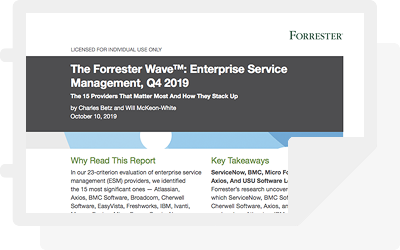Enterprise Output Management (EOM) refers to the process by which enterprise organizations manage, format and distribute data created from operational applications. These include CRMs, banking systems, insurance information systems, ERPs, retail POS systems, accounting software and more. Sometimes categorized as middleware, this information technology process specifically refers to operations that usually occur between the output of data and printing.
EOM software can have automated functions including:
- Bundling like documents
- Routing documents to printers in a network
- Printing to preprinted forms
- Managing printer operations
- Interfacing for interoffice delivery
- Restarting or rerunning jobs as needed
- Making determinations about the right print medium
- Identifying ways to avoid print waste
- Outputting to wireless devices
- Intaking new documents and sequencing data
- Increasing print capacity during peak times
- Overcoming system capacity challenges
- Extracting data from enterprise systems
The main function of all EOM software is to automate routing and processing of important documents to a centralized printer or other supported output device, ensuring mission-critical documents reach the right people. Delivery methods aren’t limited to print format and could include email, HTTP, FTP, web-based delivery, CD/DVD or fax.
However, in this article, we will look at EOM in the context of the print industry, share the benefits of EOM, describe the businesses best suited to reap those benefits and compare benefits to managed printing services.
The evolution of EOM
EOM started within the confines of the mailroom. Clerks were tasked with sorting letters and delivering them throughout the office. They performed a number of manual processes that eventually made way for new technology and automation.
Mailrooms were not the only spaces that grew to accommodate data processes and technology. Warehouses were being filled with updated documents, and systems like microfiche were introduced as archiving tools. A need emerged for comprehensive electronic filing systems.
At the same time, digital transformation began to make waves for enterprise businesses who were converting processes from manual to automated using today’s advances in technology. More and more, businesses started offering information to customers digitally, in the form of PDF statements, receipts, policies and other important documents.
This increased the output requirements of data-rich information technology systems. And with a high-level of output came the need for EOM middleware that could aid in the form of automating processes like electronic delivery, sorting, printing and more.
Benefits of EOM
Implementing EOM provides several benefits to enterprise businesses. These include the following:
Reduced operational cost
EOM reduces cost in a number of ways:
- Less print error and waste.
- Higher interoffice efficiency.
- Reduced need for operator engagement with print process.
- Automating document workflows for round the clock performance that doesn’t require supervision.
- Remote administration allows for processes to be initiated from anywhere, reducing the need for employees to be in the office.
- Saves employees’ time by automating processes like printing to pre-printed forms.
Increased service levels
By providing digital communication, enterprise businesses are reaching more customers and increasing their service levels. They are doing so by increasing communication speed, reducing paper waste that the customer would otherwise have to throw away and delivering important documents, securely, to the customer’s inbox.
Reduced error
By eliminating the manual component of paper-intensive processes, companies can rid themselves of the burden of operator error.
Increased communication
EOM increases collaboration between employees and customers. As a result, communication is clearer, more efficient and more frequent. This leads to a better business model for enterprise organizations and their customers.
Assists in digital transformation
In the current state of business development, legacy companies compete to function efficiently in the digital realm. And EOM offers a cost-effective way to simplify digital processes by centralizing them with middleware.
Reduced carbon footprint
Paper waste is not cost-effective for businesses and it’s certainly not good for the environment. By implementing EOM software, organizations can reduce their carbon footprint and help their customers do the same.
CHALLENGES ASSOCIATED WITH UNMANAGED OUTPUT
There are many benefits of implementing EOM but, what are the risks for those organizations that have not implemented a strategy for managing output? Indeed, all enterprise businesses face the same challenges, where data output exists on multiple systems like Microsoft Windows, Linux, UNIX and the cloud. This multi-vendor, multi-system approach poses many challenges for interfacing systems that provide critical output and include the following:
- System incompatibility
- Duplicate workflow processes
- Multiple print streams
- Multiple page description languages
- Inefficient multi-channel support that lack intelligence
- Lack of transparency of process
- Increased need for employee manpower
- Decreased efficiency of process
Practical EOM applications
Output management strategies are essential for any industry that has significant data output. Often EOM is associated with banking and accounting industries, but it can also provide significant advances for a number of other industries. Here are a few examples of EOM applications in leading industries.
Finance
In the banking and finance industry, enterprise businesses deal with sensitive information in the form of statements and policies. EOM can help these companies organize the information and deliver it securely to customers.
Retail
Retail customers rely on quick and accurate receipts. Using EOM, businesses can reduce paper waste providing receipts to customers, instantly. Output management can also help retail businesses with their warehouse and inventory operations.
Supply chain
EOM efficiencies can save time and money for enterprise businesses in supply chain and warehousing when it comes to automating the process of routing and printing labels.
Marketing
Linking to a CRM System (Customer Relationship Management System), EOM helps marketing professionals reach customers both digitally and through printed mailers. With EOM, data is organized and formatted via automated processes, freeing up marketing people to work on high-level strategy.
EOM assists team members at all levels, but it is particularly useful for those in operations who are responsible for making sure labor is used efficiently. For that reason, operations managers are generally the pioneers behind EOM in the workplace, but the benefits described above reach all levels of an enterprise organization.
Print management vs. EOM
Some people think that print management and EOM are one and the same, but that is not fully accurate. Print management refers to processes including:
- Managing printer devices
- Mobile printing
- Pull printing
- Print driver management
- Direct IP printing
- Self-service printing
- Virtual desktop printing
- Print auditing and reports
These are basic functions that can be managed in-house or through managed printing services. However, they are almost always user-generated. EOM often contains the same features as print management but goes a step further by connecting all of your enterprise environments and centralizing processes through automation.
Having one EOM resource instead of multiple print management resources helps to simplify output processes and assists internal IT departments in having full control and visibility.
But what about companies that have turned to managed printing services as a means of reaping some of the benefits discussed above like cost savings?
While outsourcing managed printing services can help enterprise save money, EOM is still necessary for several reasons. EOM helps enterprise businesses achieve digital transformation by way of digitizing data that may otherwise be printed and delivered manually. But more importantly, there will always be digital documents that are needed on demand for customers and employees. Managed print services usually require a user-generated order and a waiting period. By using EOM instead, enterprise businesses can generate secure documents for customers and employees round-the-clock, offering convenience, communication, collaboration and support when they need it most.
EOM: The next step in digital transformation
Enterprise Output Management is a term that refers to a specific process in the generation and delivery cycle of important data generated by enterprise organizations. Think of EOM as the automated commands that occur between output being generated from an enterprise system and delivery. These commands can perform several important processes that are convenient for businesses and customers, alike, but always result in the centralization of output and greater visibility for internal IT departments.
As businesses in the enterprise space race to transform their organizations digitally, EOM is increasingly becoming a necessary piece of their infrastructure. And it is fitting that the practice was born out of some of the earliest instances of workplace transformation – mailroom productivity solutions.
As discussed, implementing EOM has many benefits. Among them are reduced cost, reduced error, increased customer service and decreased carbon footprint. Organizations that do not manage their output suffer from inefficiencies like systems that don’t work well with each other and duplicate workflows.
Increasingly, EOM processes are being used by more industries as the solution offers the ability to increase productivity at all levels of an organization. Even enterprises that already benefit from using managed print services could implement EOM as part of their output management strategy.







